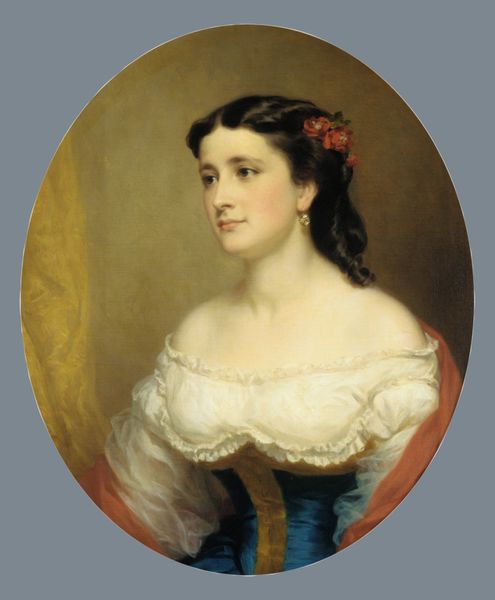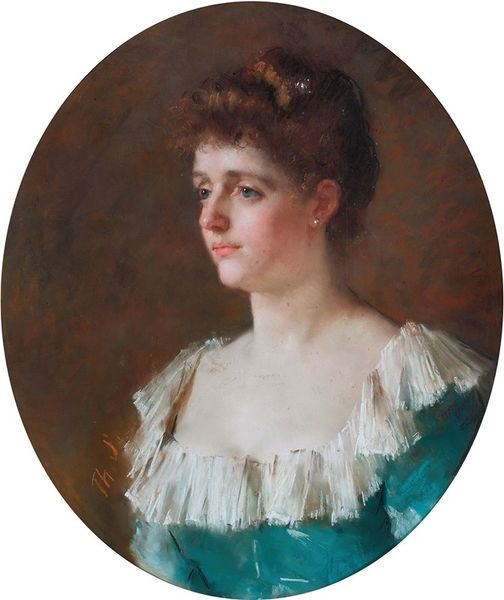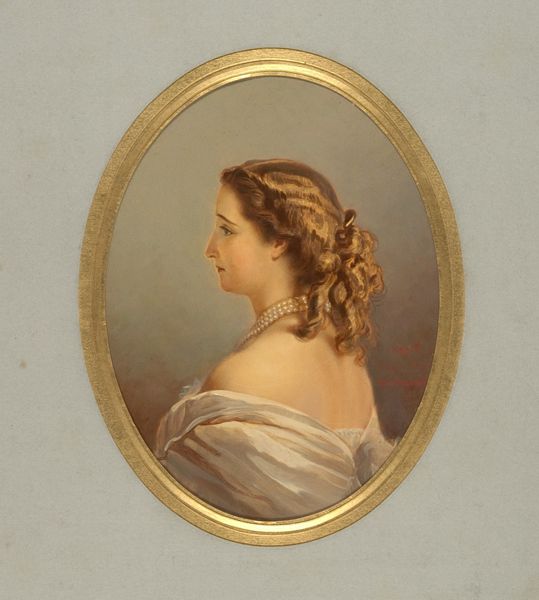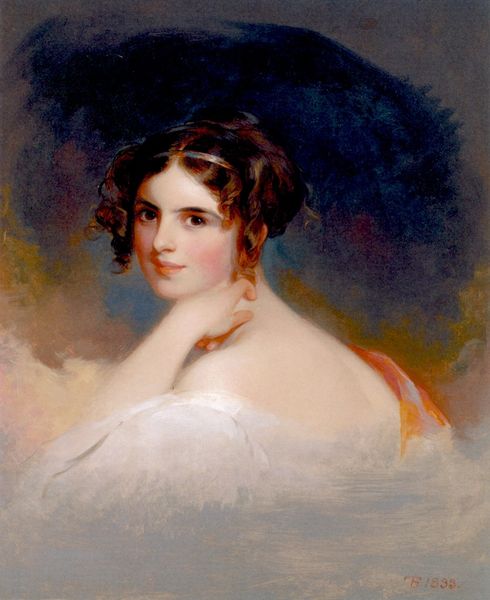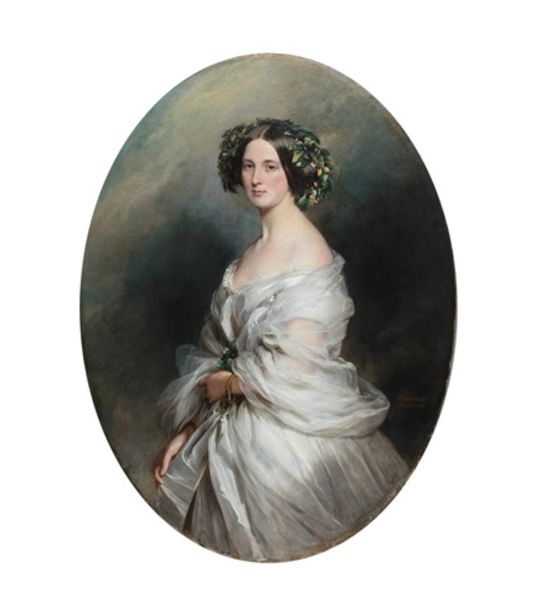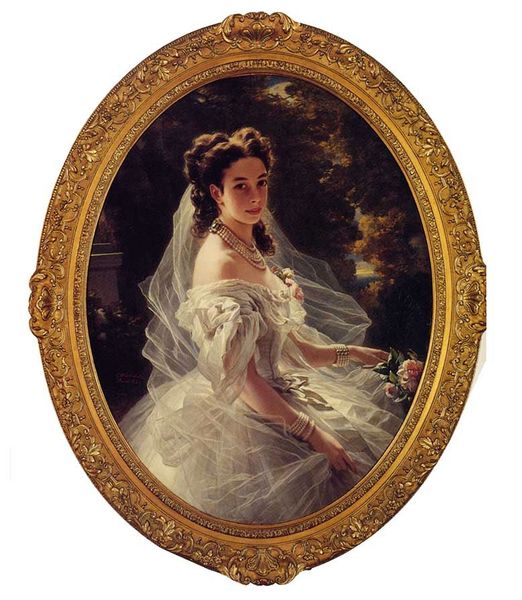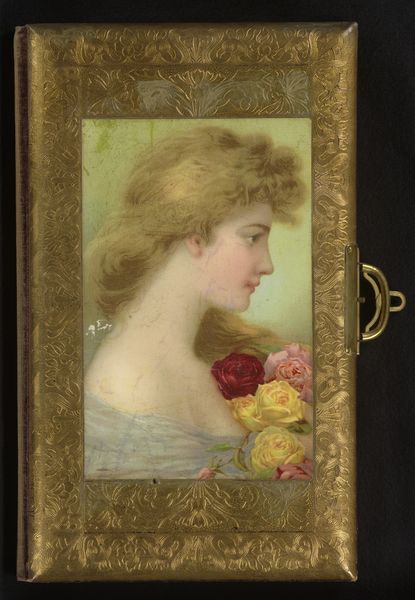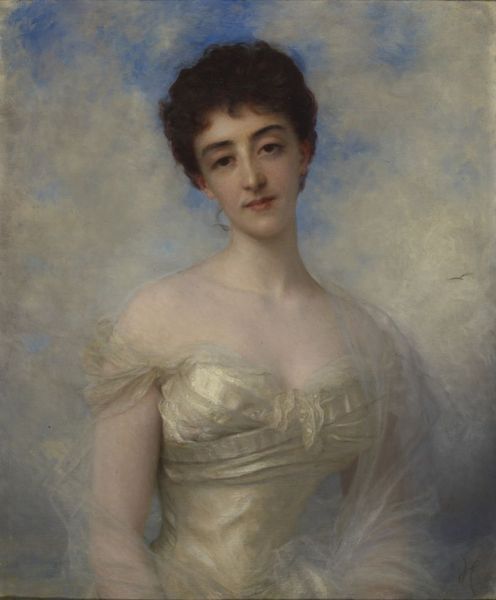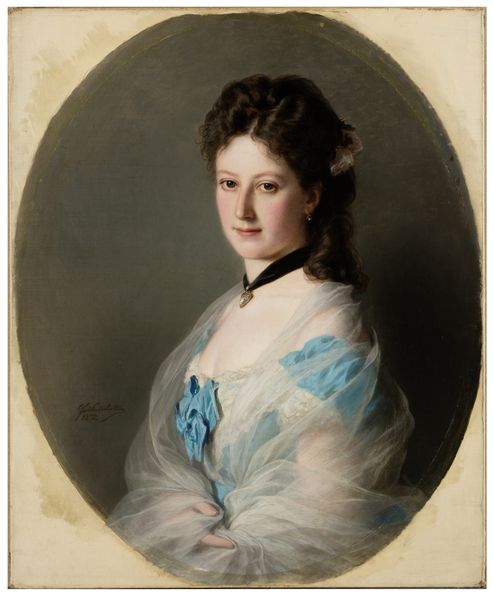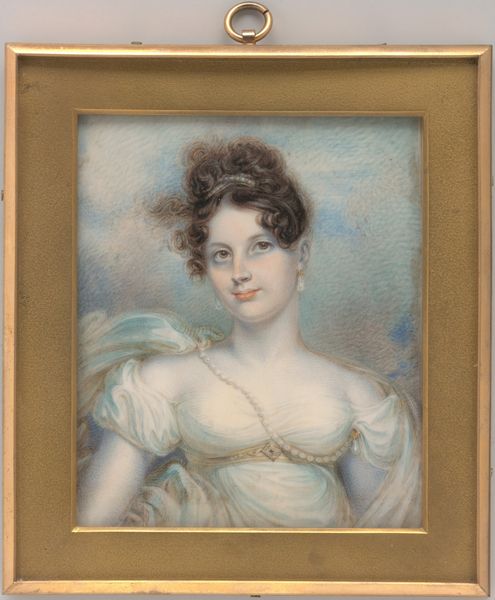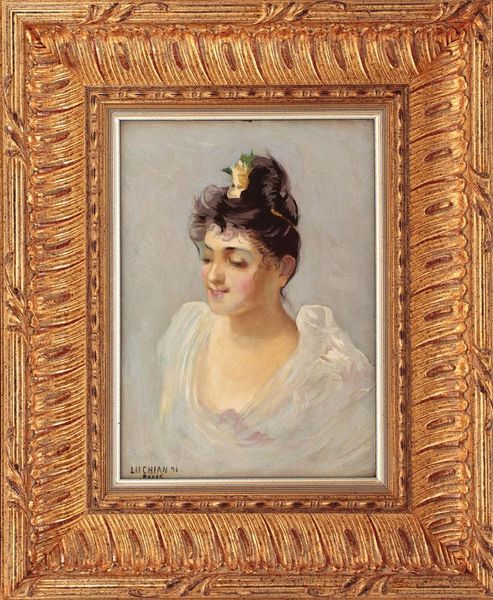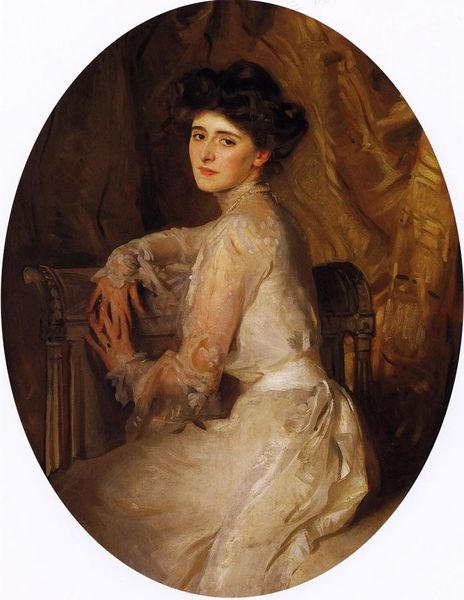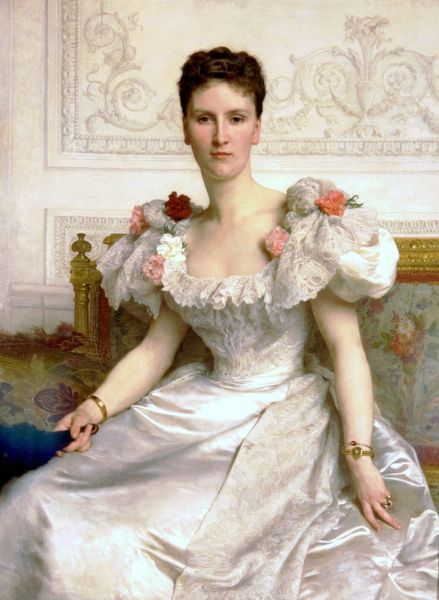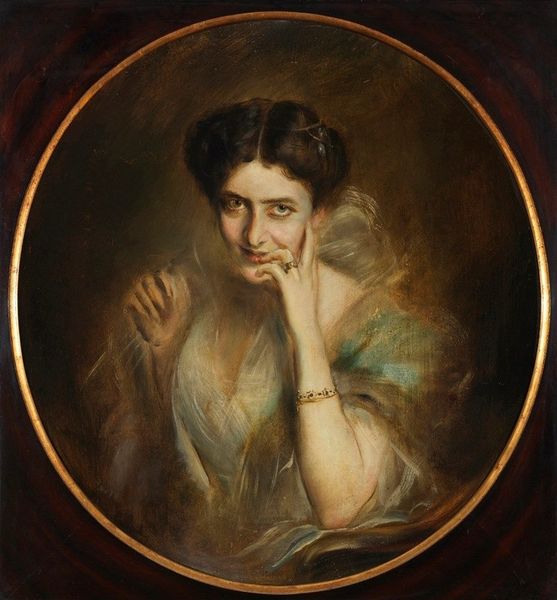
painting, oil-paint
#
portrait
#
gouache
#
painting
#
oil-paint
#
intimism
#
romanticism
#
genre-painting
#
watercolor
#
realism
Dimensions: 60 x 1 cm
Copyright: Public domain
Curator: So lovely—a perfect example of intimate Romanticism. We're looking at "Young Woman with Black Hair" by Silvestro Lega. The piece resides in a private collection, and given the medium, oil paint on canvas, I'd say it exemplifies his embrace of Realism within that broader movement. Editor: Oh, she’s giving me serious Pre-Raphaelite vibes! There's such delicate detail in her face. The way she's positioned—almost floating amidst the blooms—is dreamlike and ethereal. The flowers framing her are kind of intense against that soft white fabric and her wistful gaze. Curator: Agreed. The work does play with that sense of heightened beauty so emblematic of the Pre-Raphaelites, but Lega's emphasis on observed reality separates him in a way. He wasn’t aiming for symbolic narratives as much as he was after truthful depiction and observation. What is interesting is how Realism and Romanticism are merging with such personal themes. Editor: Yes, I can feel that. Those roses definitely enhance the femininity but not in the stereotypical way. They aren't stiff, showy blossoms, but have more life, slightly imperfect in their arrangement. There’s something about how they soften the geometry of the oval frame too, that I really appreciate. The red ribbon on her hair adds such a striking, intimate detail. Do you get a sense that she is deep in thought about something, contemplating an intimate world and moment of interiority? Curator: Most definitely! Think about how portraiture was evolving. While academic painting showcased idealised and mannered features, there was this desire to use paint in representing how society was embracing a world moving towards industrialisation, depicting people that felt both intimate and ordinary, without artifice, in a way that democratised beauty and showed emotion as key for engaging the viewer. Editor: That really adds another layer. Looking again, I notice even the almost photographic precision to those petals...but without losing that almost hazy atmosphere that I still perceive here. There is definitely a modern kind of sadness in her expression too. It gets me wondering what her real-life circumstances may have been. Curator: It prompts considerations regarding Lega’s own social standing and relationship to the materials— the pigments he acquired, the canvases he employed, the artistic circles within which he moved to produce art as commodity… Her anonymous beauty, perhaps is more universal now due to those historical circumstances in fact. Editor: In a strange way. You have helped reveal a profound truth, that indeed she could be everyone, now.
Comments
No comments
Be the first to comment and join the conversation on the ultimate creative platform.
